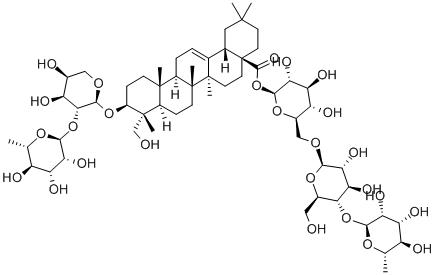Study on the antitumor effect and mechanism of green tea extract on oral squamous cell carcinoma
-
Last Update: 2015-01-21
-
Source: Internet
-
Author: User
Search more information of high quality chemicals, good prices and reliable suppliers, visit
www.echemi.com
Recently, researchers from the cancer center of the first hospital of Jilin University published a paper to explore the antitumor effect of green tea extract (GTE) on different human oral squamous cell carcinoma cell lines and its related mechanisms GTE can inhibit the proliferation of many types of human oral squamous cell carcinoma cell lines, and the sensitive cell line is Cal-27 GTE mainly affects epidermal growth factor receptor (EGFR) and Notch signaling pathway, and through the above signaling pathway affects the expression level of cell cycle related proteins, leading to cell cycle s and G2 / M arrest This article was published in the 11th issue of Chinese Journal of integrated traditional and Western medicine in 2014 In vitro, human tongue squamous cell carcinoma cell line Cal-27, human tongue squamous cell carcinoma SCC-25 and human oral epithelial carcinoma cell line KB were cultured MTT method was used to detect the effect of GTE on cell proliferation Sensitive cell lines were selected Flow cytometry was used to detect the effect of GTE on cell cycle of Cal-27 Protein chip technology was used to detect the effect of GTE on protein expression of Cal-27 cell line, and Western method was used The expression of cyclin-dependent kinases (CDK4), cyclin-dependent kinases (Cdk6), phosphoinositide-dependent protein kinase-1 (p-pdk1) was detected by blotting Compared with the control group, 50, 100, 200, 400 μ g / ml GTE increased the inhibition rate of Cal-27 cells, 100, 200, 400 μ g / ml GTE increased the inhibition rate of KB cells, 25, 50, 100, 200, 400 μ g / M GTE also increased the inhibition rate of SCC-25 cells, the difference was statistically significant (P < 0.01), and showed a dose-dependent Flow cytometry showed that: compared with the control group, 50 μ g / ml GTE mediated G2 / M phase arrest of Cal-27 cells (P < 0.05); 100 μ g / ml GTE mediated S phase and G2 / M phase arrest of Cal-27 cells (P < 0.01), and G 0 / G1 phase cell decrease (P < 0.01) A total of 107 proteins were analyzed by protein chip technology After GTE treatment, 13 proteins in Cal-27 cells changed significantly Western blot technique was used to confirm the expression of p-pdk1, CDK4 and Cdk6 protein in Cal-27 cells treated with 25, 50 and 100 μ g / ml GTE The higher the drug concentration was, the higher the inhibition rate was The difference was statistically significant (P < 0.05).
This article is an English version of an article which is originally in the Chinese language on echemi.com and is provided for information purposes only.
This website makes no representation or warranty of any kind, either expressed or implied, as to the accuracy, completeness ownership or reliability of
the article or any translations thereof. If you have any concerns or complaints relating to the article, please send an email, providing a detailed
description of the concern or complaint, to
service@echemi.com. A staff member will contact you within 5 working days. Once verified, infringing content
will be removed immediately.







